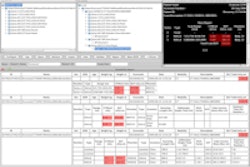Thanks to an internally developed software application, importing external prior imaging studies at U.S. Department of Veterans Affairs (VA) healthcare facilities is now a practical endeavor, according to an article published online in the Journal of Digital Imaging.
With the DICOM Importer application, a study can now be imported with manual effort of less than a minute, reports a research team led by Dr. Peter Kuzmak. Prior to that, the process ranged from 10 to 30 minutes.
"Outside prior studies can now be imported, stored, and retrieved when needed," the authors wrote. "In some instances, this may mean that a patient is spared a repeat study. In other cases, this may mean that images captured from an earlier time will be available to help with later diagnosis and treatment."
In the past, importing prior DICOM studies was very slow and labor-intensive at the VA. After loading the portable media into the drive, users would then have to wait for the commercial importer product to read all the DICOM files. Next, they would have to review the study on the importer and go the VA's Veterans Health Information Systems Technology and Architecture (VistA) HIS and place an order for an equivalent radiology study (J Digit Imaging, August 2, 2011).
After that, users would have to return to the commercial importer and use DICOM Modality Worklist to retrieve the order. They would then have the commercial importer update the DICOM images with the VA patient and order information. The process would finally conclude by sending the images to the VistA Imaging system, which integrates images into the VistA electronic health record (EHR), according to the researchers.
"And the user would have to repeat this effort for each study on the portable media that needed to be imported," the authors wrote. "This was a rather overwhelming task, given the volume of studies that need to be imported."
To improve on this, the VA developed VistA Imaging DICOM Importer, which can process both prior studies that are unknown to the local system and also outside contract studies whose orders are known.
"The workflow of the Importer was designed to operate like an online merchandise ordering application where the user adds items to a shopping cart and then proceeds to checkout," the authors wrote. "All of the interactive item selection is done first, and then followed by an automatic database update commit transaction."
After the media is loaded in the drive, users launch the Importer application, which presents a list of studies stored on the media after reading the DICOMDIR file. They can then view individual studies, series, and images, and can select studies to import. The application locates the corresponding VistA patient, study, and/or procedure for each outside study targeted for import.
"First the user identifies the VistA patient for each outside study that is to be imported," the authors wrote. "Then, for a prior study, the user selects the closest equivalent VistA radiology procedure and any appropriate modifiers. For an outside contract study, the user identifies the original study and/or procedure order."
The user then initiates the actual import process, which now proceeds automatically. VistA radiology procedures for the prior studies are automatically ordered, and the orders are assigned a study date, time, and accession number and become radiology studies, according to the researchers.
Then, Importer reads the selected studies off the media, performs import reconciliation, and imports the updated DICOM objects. In the last step, the application updates the status of the radiology study.
Average user time is less than a minute. After being used at three VA test sites to import 1,000 outside studies a week, the application is now being used nationally. Its time savings has made it a popular application, according to the researchers.
"We have shown that it is possible to construct a manually efficient application to import outside prior studies," the authors concluded. "However, a fair amount of work is needed before this capability can be provided outside of the VA. The IHE committee needs to consider supporting this capability and will probably need to add several new transactions to the IHE Technical Framework. HIS, RIS, PACS, and Importer vendors will need to implement them and test them for interoperability."



















